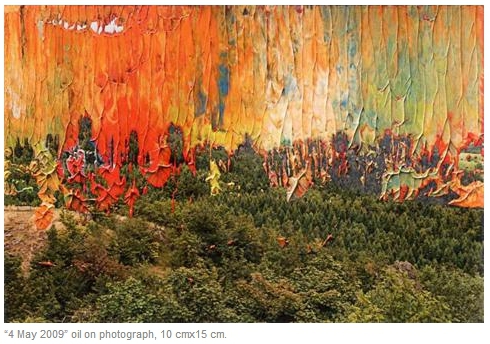Do our brains naturally prefer literal photographs over abstract art? Does that set up a fight for our attention?
As we saw with the Munch blog post last week, painters have been in conversation with photography since the invention of the camera. Some have taken photography into their art practice, while others have worked to create new forms of art that transcend the literal and challenge how we see.
Gerhard Richter, one of the most influential artists in the last half of a century, has been a key contributor to this ongoing dialogue.
Since the 1980’s, Richter has made series of small scale works in which he smears paint over photographs. One of these paintings, Evening (14.9.98), was recently featured in our Slow Art Day Tumblr. The tactility of the paint and the collision of surface and representation make them perfect pieces to look at slowly.
Jim Quilty of The Daily Star wrote a review of Richter’s show earlier this year at the Beirut Art Center that displayed many of these so-called “overpainted photographs.” Quilty suggests that the contrast between the abstract paint and the literal photography set up a kind of fight for the mind’s eye – one that abstract elements can easily lose. “…the works offer a master class in the eye’s prejudice toward figurative interpretation. The more photo there is, the greater the brain’s demand that the work be representational.”
Browse the Beirut show and read Quilty’s review to enter into this lively conversation between photography and painting. Best of all, visit Richter’s website to see for yourself his whole collection of overpainted photographs.
– Naomi Kuo, Slow Art Day Intern

